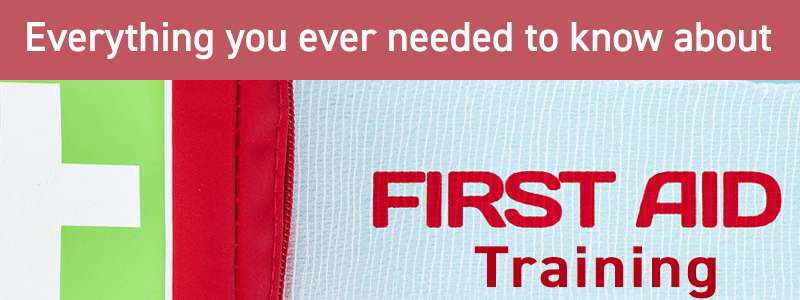Since the introduction of our new first aid training courses, our lines have been off the hook with people asking lots of great questions. We’ve whittled down the most common ones and answered them in the list below.
Here’s the definitive list on everything you ever needed to know about first aid training.
Click on your question of choice to be taken directly to the answer.
Do you have to participate in a hse first aid course to get a certificate?
Do you need to take anything with you to first aid training?
How many people do you need to have with first aid training?
What is the difference between a 3-day and a half-day first aid course?
Do you have to be first aid trained to fill first aid boxes?
1. What is First aid training?
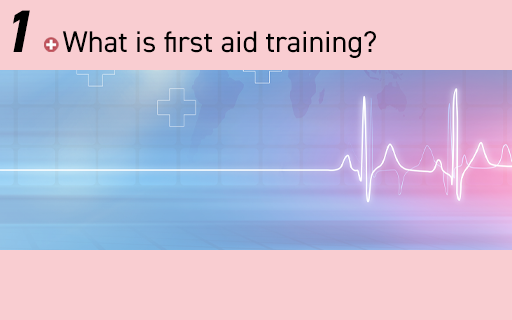
Any point you, your employees or a member of the public could experience an accident, it’s essential that in cases like this you can trust that someone with first aid training will be able to act in time.
At its most basic, first aid is the initial assistance given to a victim of injury or illness. First aid training gives those the skills to be more than a helpless bystander, allowing them to apply their knowledge in skills like CPR and AED training.
First aid saves lives.
First aid training gives people the ability to save lives.
2. How old do you have to be to do first aid training?
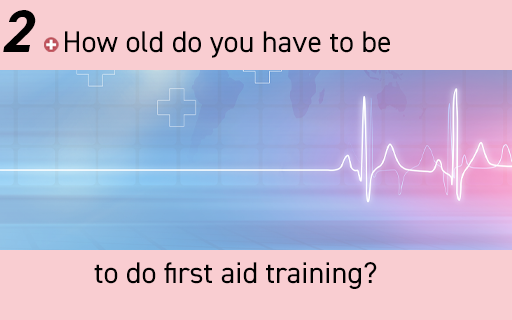
As of current UK legislation, school children are not taught first aid training in the national curriculum. Not knowing what to do in the event of an emergency is a common problem but that shouldn’t be the case.
For example, in Denmark, school-training programmes increased “bystander intervention” from 20% to 70%, while the UK may take some time to address this change, in the meantime you as an employer need to ensure you have some first aid in place.
Some training providers allow people as young as 12 to participate in first aid training. The courses we offer are suitable for anyone aged 16+, with availability for booking in over 170 venues.
3. When do you need a trained first aider?
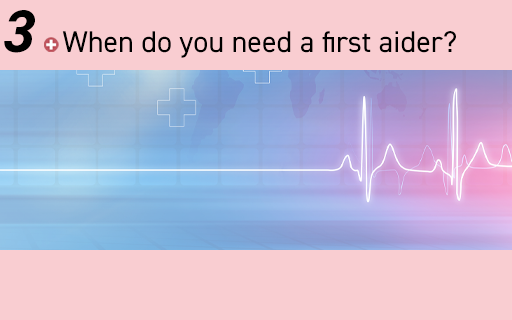
Every workplace is different and more susceptible to risks than others. You as an employer will know the site and surroundings better than anyone, though you need to keep in mind that before you assess your first aid needs, they should be “adequate and appropriate in the circumstances“.
To do this, employers need to consider a variety of different factors. For example:
- The nature of the work and risks in and outside of the work site.
- The companies history of accidents
- The size of your business.
- Staff, employees and workers that come onto the premises.
- How remote you are from emergency medical services.
If your workplace is low-risk and you are comfortable in the knowledge you don’t require a trained first aider, an appointed person would be the best choice. At Direct365, we offer a “first aid for appointed persons” course which gives trainees the ability to deal with emergencies and accident reporting.
This is not as extensive as the full first aid at work training course but gives suitable knowledge to those who you’ve appointed to be in charge of the first aid.
4. What do you have to do on a first aid course?
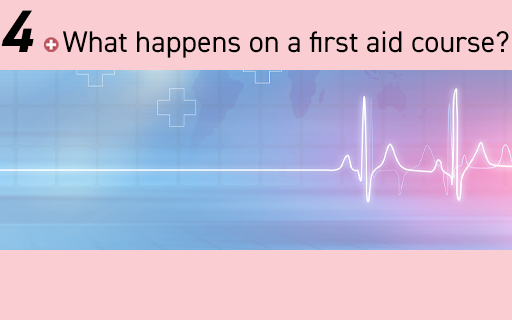
When undertaking a first aid course, you will understand the role and responsibilities of a first aider. Training courses will provide a range of accident scenario training which will include demonstrations, practical training and assessment in a classroom environment.
Every first aid course now also consists of the training in AED defibrillators, so trainees will be able to use one of these life-saving devices in an emergency.
A first aid course trains people with knowledge and confidence to take control of an emergency. It isn’t just ticking off a box; this training teaches an all-important and life-changing skill.
5. Why do you need first aid training?
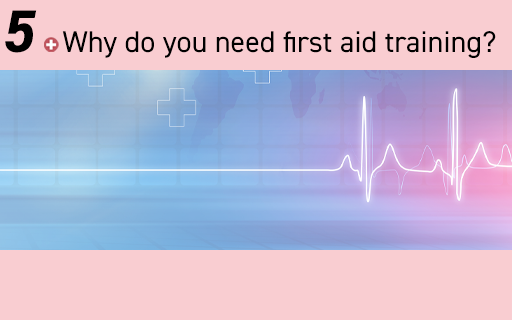
All it takes is one moment, one mistake for someone’s life to change forever. Unfortunately, these situations are not seldom in UK workplaces.
You can see this from the press releases issued by The Health and Safety Executive (HSE), who document on an almost daily occurrence, companies who have failed to guard the safety of their workers.
One most recent case was a distribution company fined after an agency worker sustained brain trauma and life-altering injuries as a result of improper training and supervision.
Why do you need first aid training?
It’s the law and can protect your business.
All employers must comply with the 1981 Health And Safety (First Aid) Regulations which state employers need to provide adequate first aid facilities, equipment and training.
As of 2017/18, there were 5550,000 workplace injuries recorded, ranging from minor cuts to serious fractures; the experience of a trained first aider allows them to act upon the injury and in more serious cases apply first aid until emergency services arrive.
First aid training saves lives by giving your employees the confidence to spring into action in an emergency; also helping to reduce recovery times and the number of accidents in the workplace.
Book a session today!
6. Do you have to participate in a hse first aid course to get a certificate?
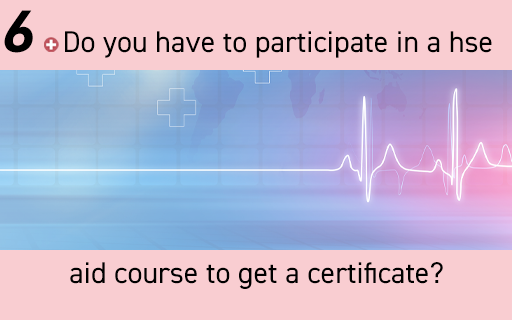
Since October 2013, the Health and Safety Executive (HSE) no longer approve first aid training qualifications. Because of this, organisations aren’t allowed to claim they are HSE approved anymore. That doesn’t mean providers can act out like the wild west with little to no regulation. Training providers still need to demonstrate to the HSE how they are a credible training service provider.
The HSE state all first aid training providers need to be able to demonstrate how their training is up to scratch with the following criteria expected of trainers and assessors:
- “monitoring and quality assurance systems
- teaching and standards of first-aid practice
- syllabus content
- certification”
The standard of first aid should come from a trusted and responsible body of medical opinion (like the red cross) so that your training providers are using trusted sources of medical information when delivering their classes.
You can find out more about this in our answer to the question What endorsement should first aid trainers have in the UK?
7. Do you need to take anything with you to first aid training?
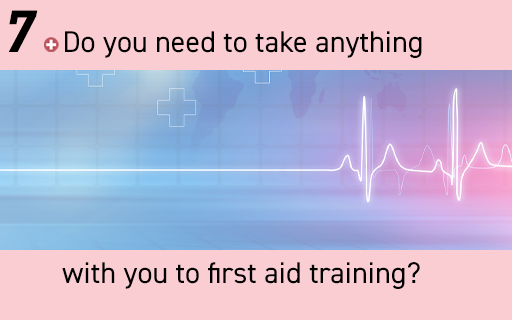
Due to the nature of these courses, we’d recommend comfortable clothing as you will be spending time kneeling on the floor during practicals such as CPR and resuscitation.
The only other thing you need to bring on the day is a willingness to learn and readiness to participate in practicals.
8. How often do you need to do a first aid course?
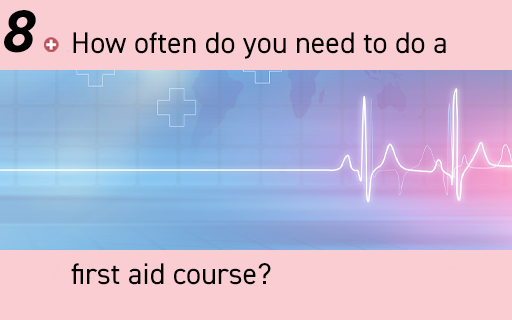
For those who take the first aid at work course, their certificate needs updating every three years. To maintain basic skills and keep up to date on any changes to first-aid procedures.
The re-qualification course lasts two days and helps to give a refresh on your skills. Completing the course will renew the certificate for another three years.
Although the first aid for an appointed person course is valid for three years, we recommended that people who take this course refresh their skills every 12 months.
9. How many people do you need to have with first aid training?
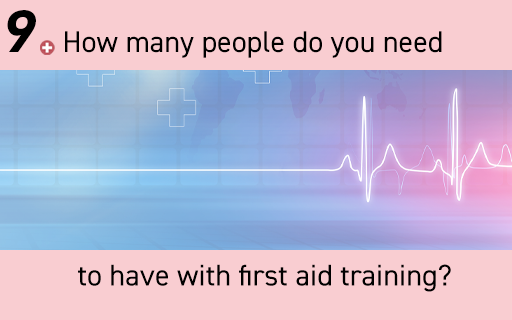
How many people you need with first aid training is entirely dependent on your complete risk assessment and what degree of hazard your work entails. Take this example from the Health and Safety Executive (HSE) as a rough guide:
Low hazard (e.g. Offices, Retail shops, Libraries)
Fewer than 25 employees – One appointed person
Between 25- 50 employees – One trained first aider
More than 50 employees – One trained first aider for every 100 people.
High hazard (e.g. Construction, Manufacturing, Warehouse)
Fewer than 25 employees – One appointed person
Between 25- 50 employees – One trained first aider
More than 50 employees – One trained first aider for every 50 people.
10. If you’re first aid trained do you get extra money?
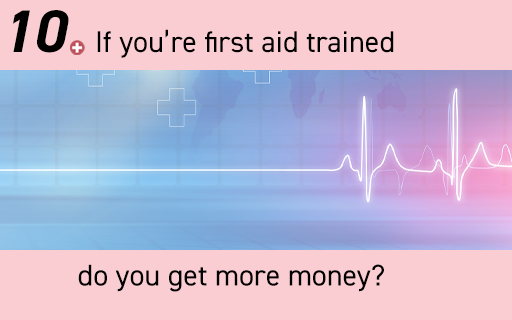
First aiders have a lot more responsibility on those who haven’t had the training. However, there is no direct outline for any employer to increase the wage of employees with this training.
As it’s mandatory for an employer to have someone on site with some form of first aid training, they can pay to give an employee first aid training.
It’s down to your preference whether you want to remunerate those who have this ability.
11. What does the eyfs say about first aid training?
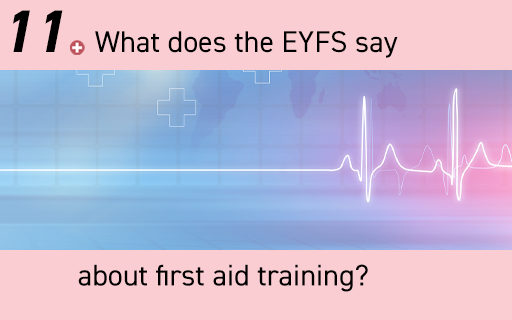
The law states that all qualified level two and three child carers must have a full paediatric first aid certificate.
The Early Years Foundation Stage advise that a paediatric first aid training certificate needs renewing every three years. The course itself must teach adequate, and other equipment including baby and infant models must be in training so that trainees can practice and demonstrate the proper techniques on a like-for-like subject.
The training expectations of the course cover a wide range of injuries, such as bleeding, burns and anaphylactic shocks.
For the full range see ANNEX A.
12. What is the difference between a 3-day and 1-day first aid course?
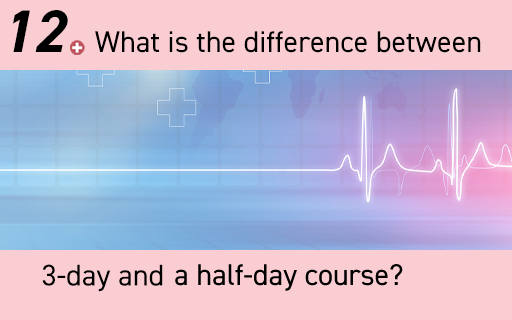
The main difference between a 3-day course and a half-day course is the knowledge and practical skills to learn over the course of the training. The half-day session we offer deals with emergencies and accident reporting. Otherwise, three-day courses cover a wide range of injuries and illnesses that could happen within the workplace, teaching trainees how to administer first aid in these cases properly.
You would take the half-day course for a low-risk workplace setting.
The full three-day is suitable for all workplaces that specify the requirement of first aider training in there risk assessment.
13. What endorsement should first aid trainers have in the UK?
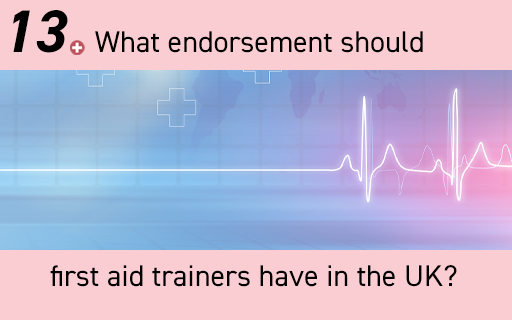
It would be best if you were confident that the training provider you’re using has the proper certification. After all, being given false first aid information would be disastrous. A trusted provider would need for example:
- An independent training provider would need to be a member of the first aid trade body, that meets the standards expected.
- Be a part of the traditional voluntary aid sector (St Johns or Red Cross)
- Run an accredited service.
When providers can show they are competent to deliver first aid training and have the right quality assurance in place, then employees who take part will have the proper certifications to provide first aid in the event of an emergency.
Like with all first aid training, employees will need to have a refresher course as is required of them to keep the certification up to date.
14. Do you have to be first aid trained to fill first aid boxes?
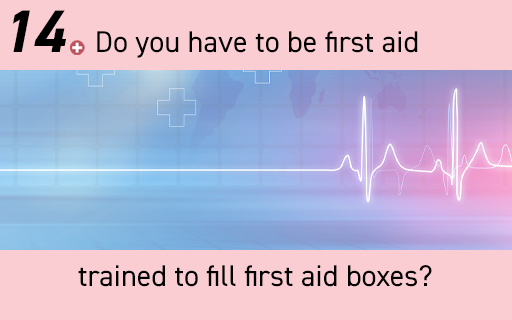
If you’ve judged from your workplace risk assessment that a first aider isn’t required, you must still make appropriate first aid arrangements. All workplaces should have a first aid kit on hand. However, the person you appoint to take stock of it doesn’t need first aid training.
Whether you deem the workplace as low risk to substitute the need for first aid training. We offer an “appointed persons” course for this exact reason. The appointment person will learn in our half-day session:
- How to deal with an emergency
- Accident reporting
- Having a seizure.
15. How do you get first aid training?
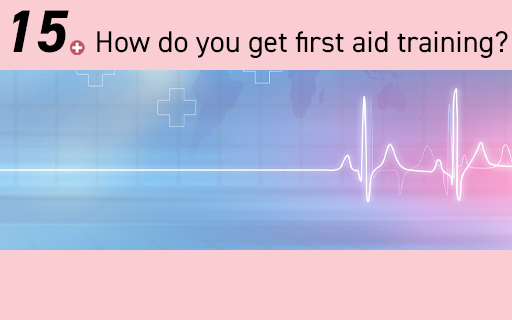
Since the Health and Safety Executive (HSE) no longer provide first aid training, for employers, it’s up to them to book employees onto a first aid training course if their first aid risk assessment requires a first aider. The best courses work through a range of injury scenarios and teach trainees through practical demonstrations.

